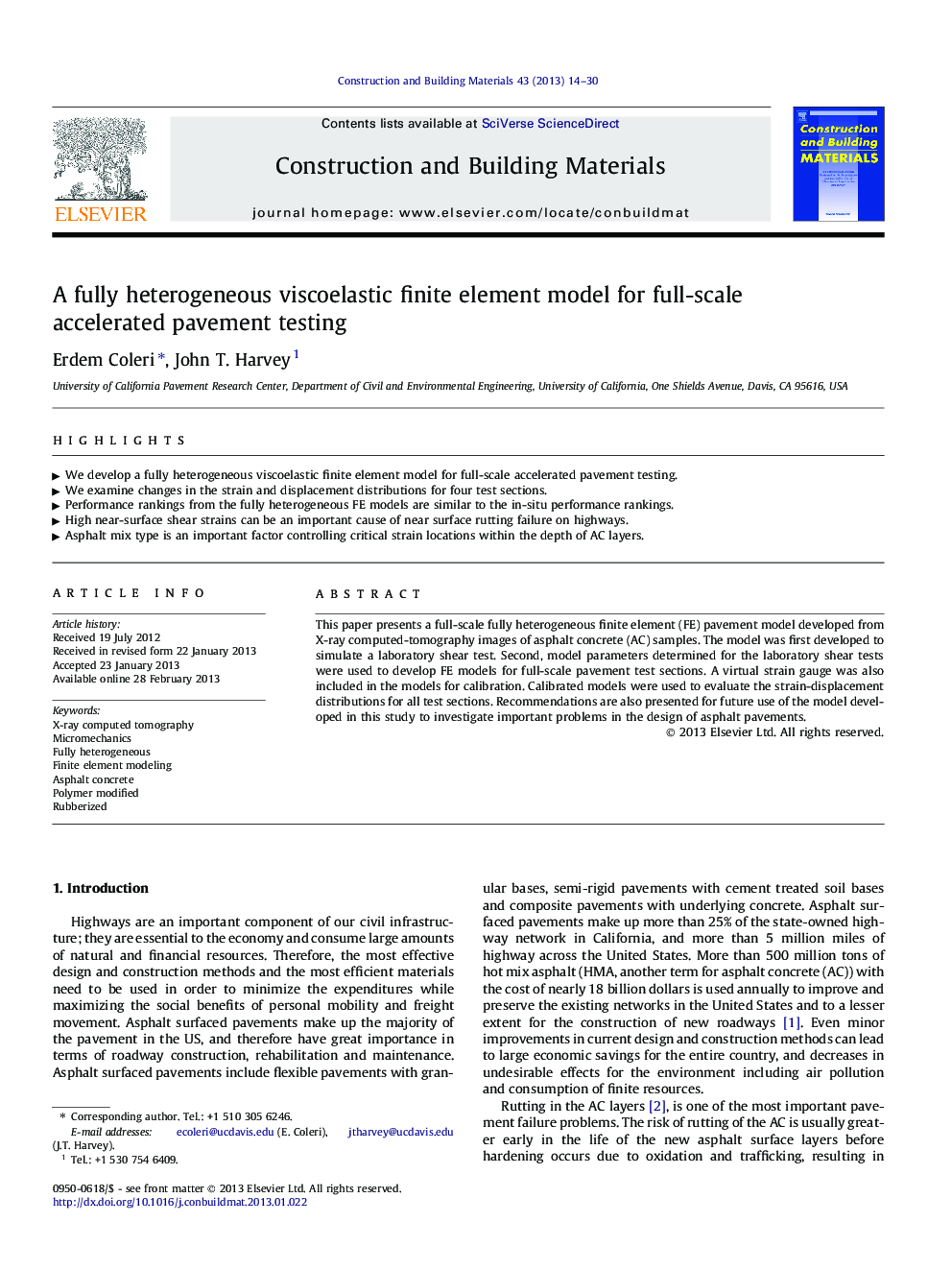| Article ID | Journal | Published Year | Pages | File Type |
|---|---|---|---|---|
| 258131 | Construction and Building Materials | 2013 | 17 Pages |
This paper presents a full-scale fully heterogeneous finite element (FE) pavement model developed from X-ray computed-tomography images of asphalt concrete (AC) samples. The model was first developed to simulate a laboratory shear test. Second, model parameters determined for the laboratory shear tests were used to develop FE models for full-scale pavement test sections. A virtual strain gauge was also included in the models for calibration. Calibrated models were used to evaluate the strain-displacement distributions for all test sections. Recommendations are also presented for future use of the model developed in this study to investigate important problems in the design of asphalt pavements.
► We develop a fully heterogeneous viscoelastic finite element model for full-scale accelerated pavement testing. ► We examine changes in the strain and displacement distributions for four test sections. ► Performance rankings from the fully heterogeneous FE models are similar to the in-situ performance rankings. ► High near-surface shear strains can be an important cause of near surface rutting failure on highways. ► Asphalt mix type is an important factor controlling critical strain locations within the depth of AC layers.
